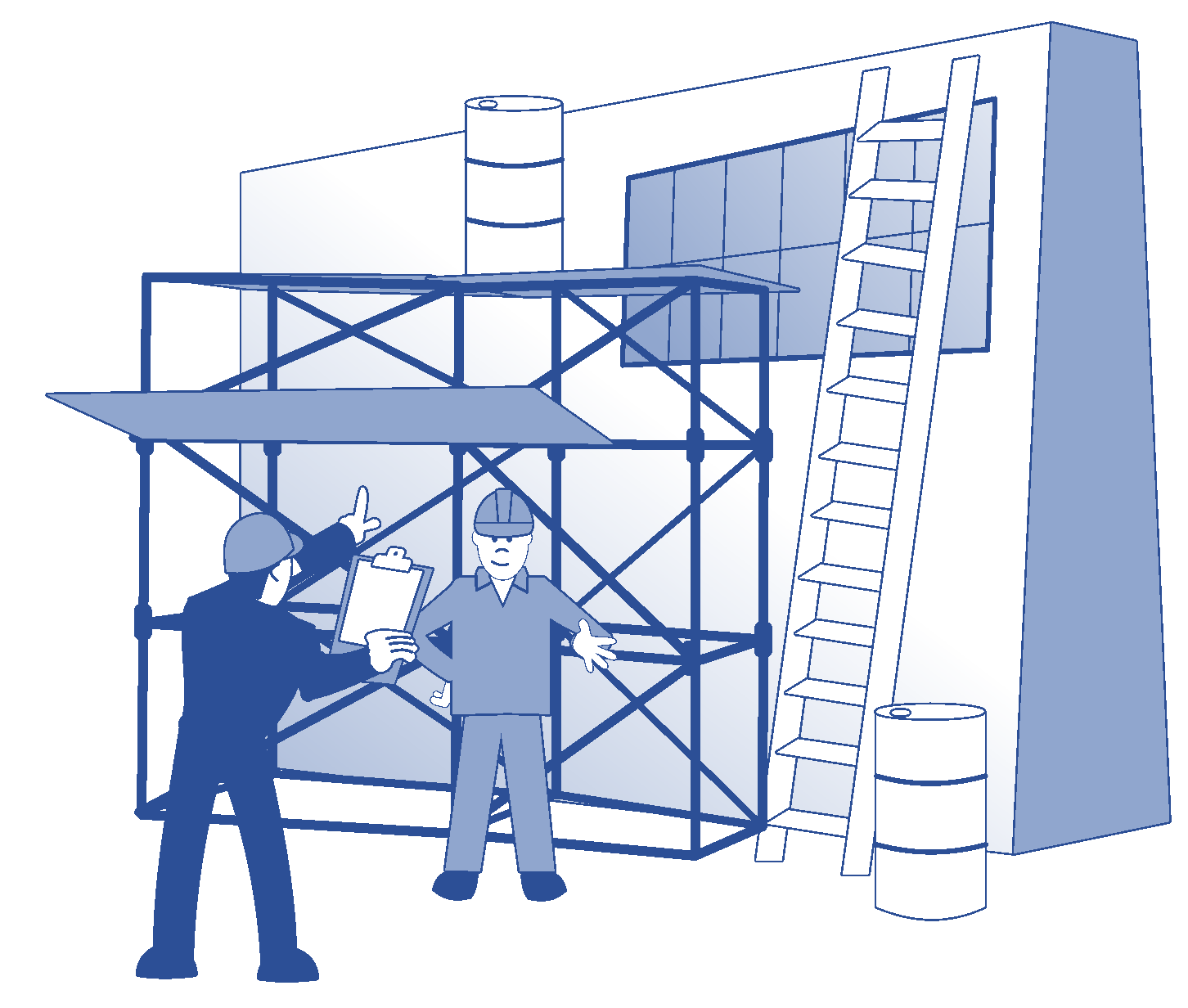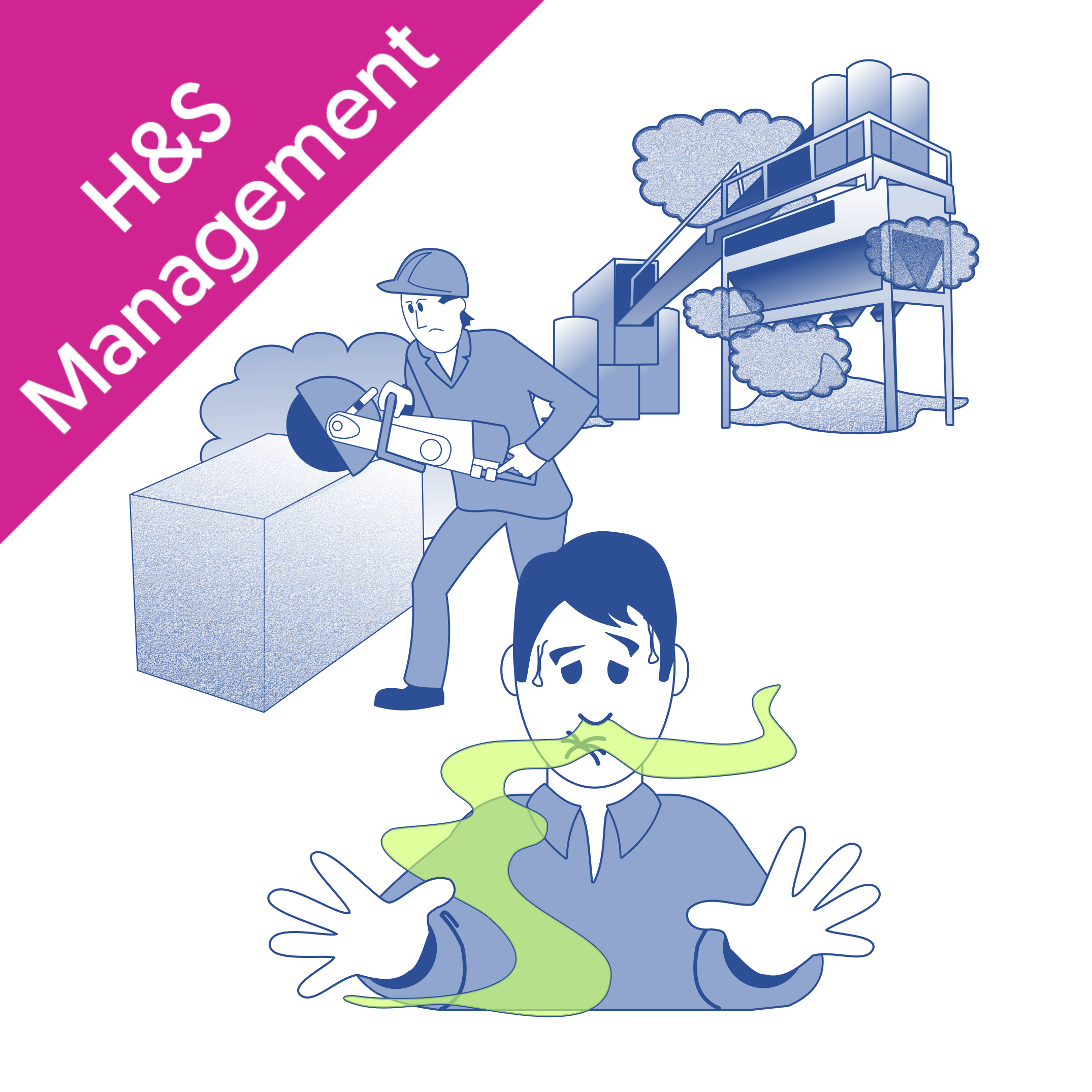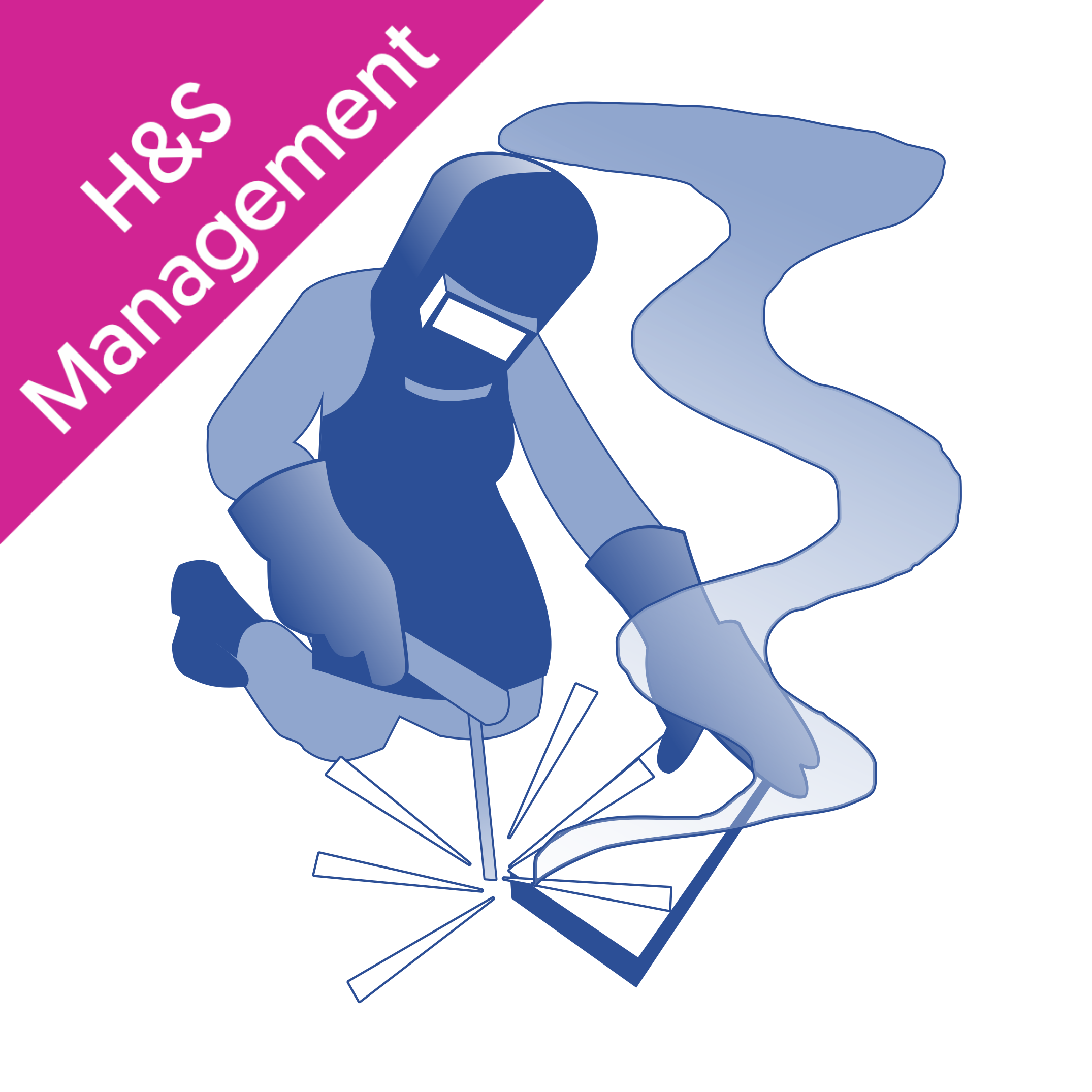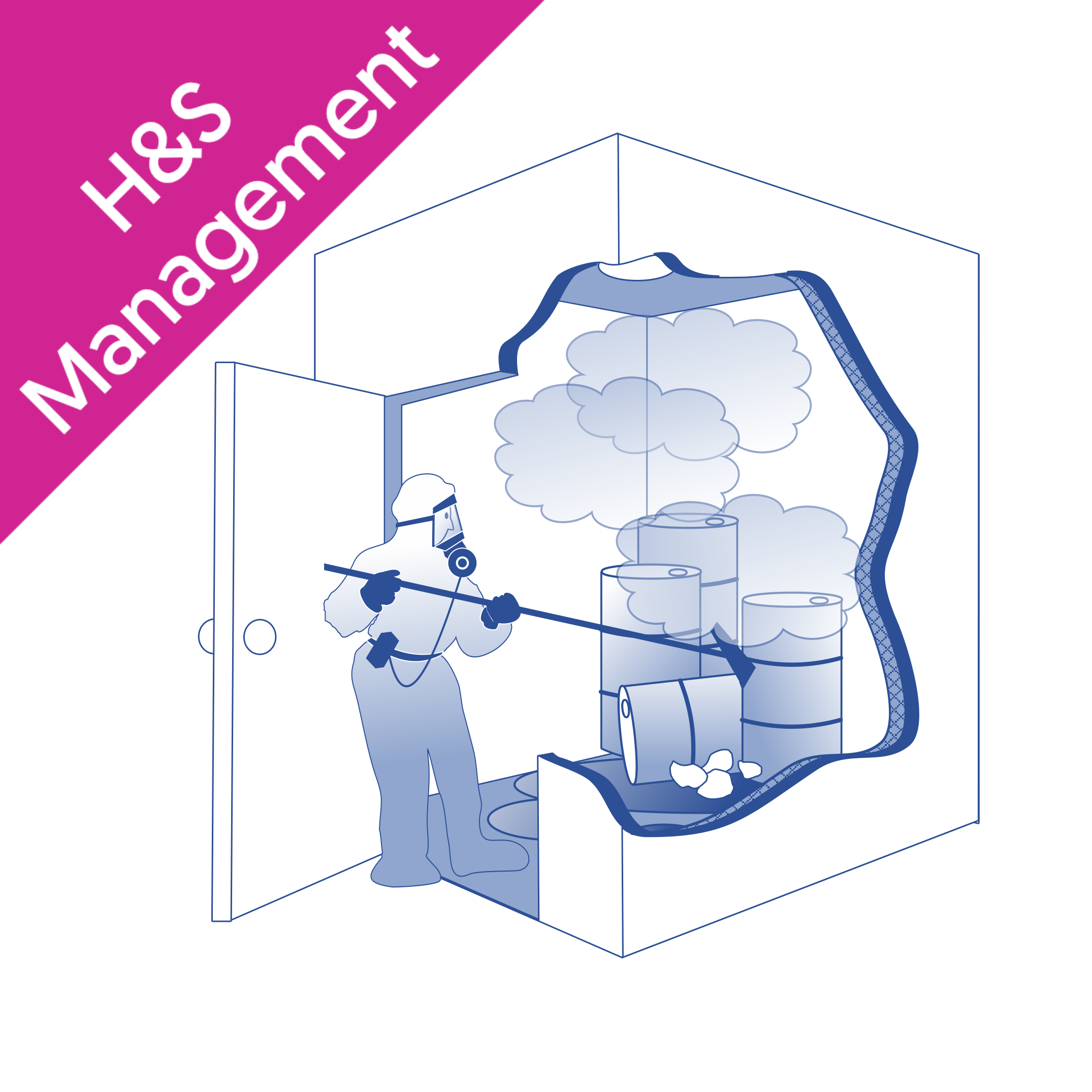Which businesses should take a COSHH assessment?
If your business uses chemicals or creates products that could harm your workers’ health, you must control the risks. Some processes within your normal business process may also carry a type of risk, such as dust and particles generated during sanding or cutting.
Health problems can be very serious. They can lead to issues like lung disease, dermatitis, and asthma. You will need a COSHH assessment if you use, create, or produce substances that have hazardous properties in your workplace.
A hazardous material is something that can cause ill health. This kind of substance can include:
- Hazardous chemicals found directly in work processes like glues, paints, and nanotechnology.
- Fumes, vapours, and mists produced by various work activities.
- Natural occurrences such as: dust, gases, and germs.
Some industries that work with or create hazardous materials are:
- Farming
- Car Industry
- Food Service and Cooking
- Cleaning and Upkeep
- Building
- Beauty Services
- Design and Technical Work
- Fuel Production and Supply
- Production
- Printing Services
- Science and Study
If you know that your business makes use of chemicals or produces hazardous substances, you need to produce a COSHH risk assessment.
What is a COSHH assessment?
The principles of a COSHH assessment for health risks are the same as those of a general safety risk assessment.
However, the nature of health risks from harmful substances can be less obvious than in the case of injury from an accident.
Unlike safety risks, which can lead to immediate injury, the result of daily exposure to health risks may not manifest itself for months, years and, in some cases, decades. Irreversible health damage may occur before any symptoms are apparent.
The main purpose of a COSHH assessment is to identify the risks and control the exposure of employees and others to hazardous substances.
A COSHH risk assessment looks at risks from harmful substances. It doesn't just focus on things marked as hazardous. It can also include materials that your business makes as waste, like dust and silica from cutting, grinding, or filing.
Who should carry out a COSHH assessment?
It is up to the employer to make sure that a COSHH assessment is done for the business. Before starting the COSHH assessment, you need to decide who will do it. As the employer, you should select a 'competent' person to carry it out. This could be you, an employee like a health and safety officer, or an external consultant.
You might need to hire experts in occupational health if your organisation handles risky or complicated substances. This is especially important if you have many employees or several departments. It's also necessary if you use several different hazardous materials and work methods.
For companies with five or more workers, it's important to write down your safety check. The Health and Safety Executive suggests that even smaller businesses should keep a record of how they spot dangers and what steps they take to protect the health of their workers.
What are the five steps to a COSHH assessment?
A COSHH assessment is much like a risk assessment. However, it focuses only on hazardous substances. Its main goal is to help control the exposure of workers and others to these dangerous materials.
The HSE has recommended five steps for COSHH assessments:
Step 1: Gather information about the substances, the work and working practices.
- Find the dangerous materials that are in or might be in the workplace. Also, note how many people are there and for what purpose.
- Collect information about these dangerous materials, including how much of each one is used. Suppliers of hazardous substances include a Safety Data Sheet when you order the product. Use this information in your COSHH assessment.
- Look at the risks these materials pose. You can review labels, packaging, safety data sheets, HSE guidance, and available studies.
- Determine who might be at risk from these dangerous materials. Think about who may be handling the substance and how they might be exposed. Levels of exposure to the chemical can occur through breathing it in, swallowing, or absorbing it through the skin.
You might not always know which materials in your work area are harmful. This is because many dangerous substances do not have warning signs. For example, wet cement, flowers, dust, and glue are all seen as dangerous by COSHH. If you work in a factory, you need to think about the by-products of your work and what comes out of your processes. These can also be harmful.
Step 2: Evaluate the risks to health either individually or collectively.
- Check the health risks. This means looking at how long and how often a person is around the substances.
- Look at the exposure levels. For example, find out how much dust, gas, fumes, or vapour someone breathes in and for how long.
- Think about the Workplace Exposure Limits. Are they at an acceptable level or being broken?
- Consider if current and future exposure could be a health risk.
Step 3: Decide what needs to be done for the control of exposure to hazardous substances.
At this stage of your evaluation, you should have found the hazards. You should know who is at risk and review the risks for the different people or groups exposed. Next, you need to find ways to reduce or remove these hazards.
- Check how well the current control measures and any PPE work. Use any available records from environmental monitoring and see if they follow the laws.
- Determine what extra control measures are needed.
What is the hierarchy of control?
There are six levels in the hierarchy of control. To manage hazardous substances, ask these questions in this order:
- Can we completely remove the risk of exposure to hazardous substances?
- Is it possible to replace the hazardous substance with a safer option?
- Can we lower exposure to hazardous substances by using proper storage?
- Can engineering changes, like better ventilation or using fume cupboards, help eliminate the risk?
- Are the risks explained well to people who may be exposed, through training and signs?
- As a last option, can personal protective equipment (PPE) lessen the risk of exposure and harm?
Once you have asked yourself the above questions, you must put a plan in place for each hazard.
- Decide what maintenance and supervision are needed to make sure the control measures work well.
- Create emergency procedures.
- Explain to your team how to check exposure levels.
- Decide if and how to monitor health effects.
- Determine what necessary knowledge, instruction, and training your team needs.
Step 4: Record the assessment.
- First, choose if you need to write down the results of the assessment. A company must record the results of a COSHH assessment if it has five or more employees. Still, it's a good practice to document significant findings from all health and safety assessments, even if you have fewer than five workers.
- Next, decide how you will format this record. You can find our free COSHH risk assessment template below.
- Finally, think about how you will store the record and share it with those who need it, like employees and people who visit your premises.
Step 5: Review the assessment.
- Choose when a review is needed. This is usually after a certain period or after major changes in how you work.
- Identify what should be reviewed.
How do I fill out a COSHH assessment form?
There is no specific form you need to fill out. To assist small businesses in recording the necessary information for a COSHH Assessment, you can download our free COSHH sheet template here:
![Free COSHH Assessment form]()
Download our free COSHH form to help with each step of your COSHH and Risk Assessments.
Remember:
- Keep track of the completed COSHH assessment templates.
- Set a date to review it later.
- If you have complex situations or work for a larger organisation, you might need help from a COSHH Consultant.
Conclusion
As you finish the COSHH assessment process, keep in mind that recording and reviewing your findings is important. By writing down the assessment results, no matter how many employees you have, you promote openness and responsibility in handling health and safety risks.
You can use the available templates when you fill out a COSHH assessment form. This will help make the process easier and ensure you include all important details.
If you or your team require more information, our COSHH Awareness Course is available to purchase as standalone training or as part of a training bundle.









